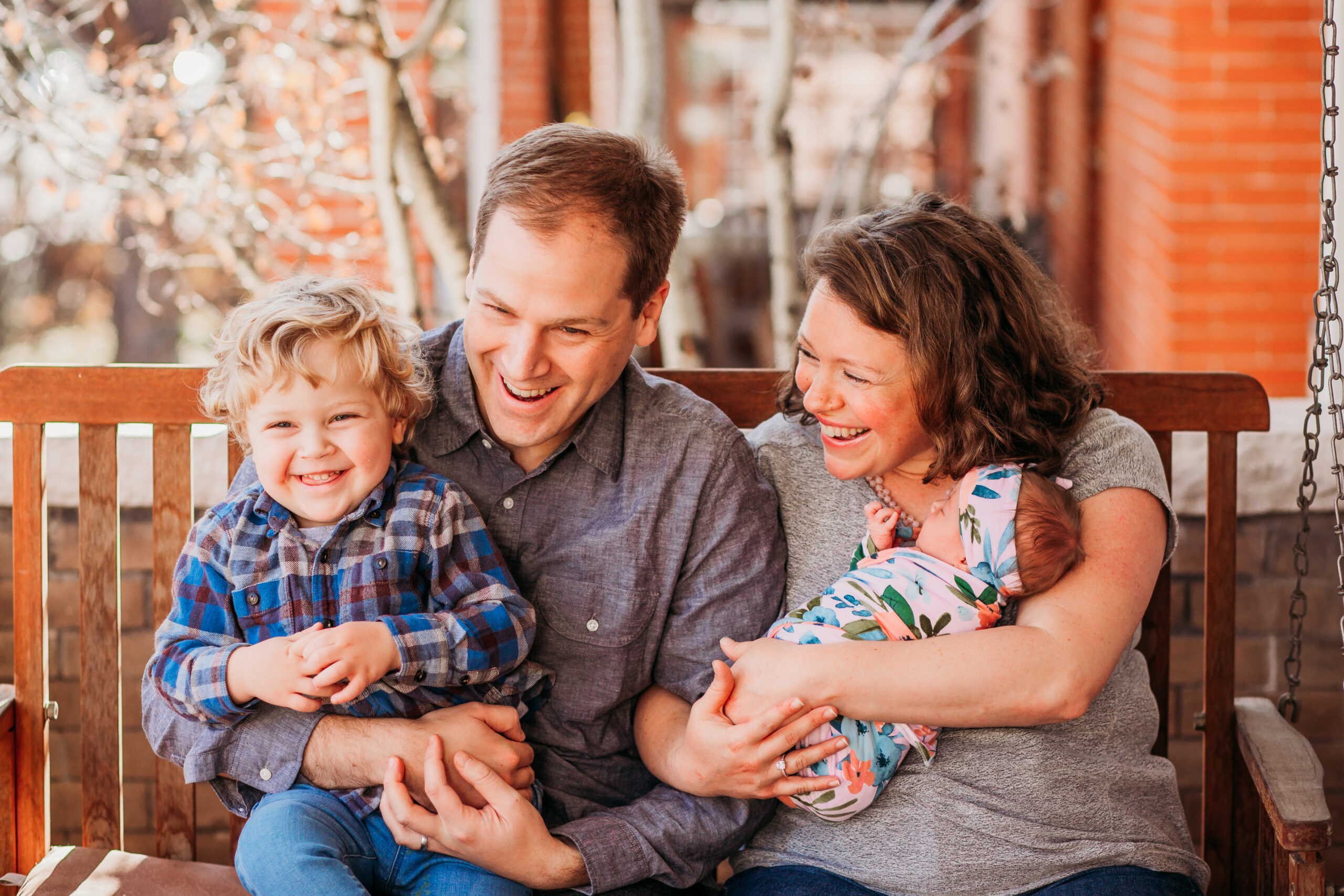Wanting a natural birth with her first child but having a C-section, she advocated for the same with her second child and found our doctors onboard with the plan for vaginal birth after cesarean

While living in New York City, Michelle and her husband, Marc, were overjoyed when they found they were pregnant with their first child, Leo. Michelle held onto an image of a more natural birth, her newborn baby being placed on her chest and enjoying this special time as a new family.
However, they soon had to face several hurdles as complications arose.
At 20 weeks they discovered Leo had a congenital heart defect. After learning this news, Michelle knew that she would have to adjust her expectations of her birth “plan,” as she learned her baby would have to be taken directly to the NICU upon birth. When Michelle’s water broke, Leo began to experience decelerations, or a fall in fetal heart rate. Although this was not related to his heart defect, it was an added worry.
Because of the decelerations, Michelle ended up having to undergo a C-section to deliver Leo.
“I had gone into labor hoping for a more natural type of birth and immediate skin time with my baby,” says Michelle. “I didn’t have a lot of opportunities for things to go my way that day.”
A second chance at natural birth thanks to VBAC
After moving to Denver, Michelle and Marc learned they were pregnant with their second child, Ada. Michelle knew this was an opportunity to have the natural birth she had hoped for by pursuing VBAC, or vaginal birth after cesarean.
Depending on medical history and the reason a C-section was previously performed, VBAC is a reasonably safe option for many patients. It is associated with less risks than a repeat C-section and can cut down on the hospital stay while speeding up recovery. VBAC can come with some risks including uterine rupture, which only occurs in 1% of women who attempt vaginal delivery after a C-section.
We can help you have the birthing experience you desire.
Finding the right OB-GYN
As Michelle searched for a provider in her new state, a friend recommended CU Medicine OB-GYN East Denver (Rocky Mountain), and she soon had an appointment with Dr. Jennifer Pitotti.
Michelle had heard a lot of different things about VBAC and dove into her own research as well. She would need to know how the providers at CU Medicine OB-GYN East Denver (Rocky Mountain), who might become part of her labor and delivery team, felt about the option. She also understood that even if they agreed it was appropriate, things could always change once she was in active labor at the hospital.
Most people she had spoken to told her it would be a hard experience. But Michelle’s best friend had undergone a successful VBAC, and she found a doula, Krystal Bruchs, who had experience with VBAC as well. It helped Michelle feel more in control with a supportive team behind her.
A VBAC labor and delivery plan is born
When Michelle told the team at CU Medicine OB-GYN East Denver (Rocky Mountain) that she wanted to pursue VBAC, she was met with full support from everyone. “The team told me that as long as there were no complications, I would get to have a vaginal delivery,” says Michelle.
Michelle describes the doctors as cautiously optimistic, which being a realist herself she appreciated. She knew there were risks, and the doctors didn’t gloss over those points. However, they were still ready to do everything they could to allow Michelle the birthing experience she had wanted so desperately with her first child.
Adjusting the plan for gestational diabetes and labor induction
Michelle developed gestational diabetes, which is diabetes first diagnosed during a woman’s pregnancy that can affect the mother’s pregnancy and her baby’s health. As she neared her delivery date, Michelle began experiencing high blood pressure. This, in addition to the gestational diabetes, prompted Dr. Emily Schneider, another member of the team, to create a labor induction plan for her.
“Dr. Schneider helped immensely in my plan to be induced,” says Michelle. “She went out of her way to make me feel comfortable and confident, speaking with other doctors who would be on call to make sure everything was safe while honoring my wishes.”
Dr. Schneider told Michelle, “This is going to give you the chance you want.”
Michelle was also ecstatic when she learned Dr. Allison Herman was on call the night she was induced. She had felt very supported by Dr. Herman after Dr. Pitotti left on maternity leave. The doctors truly worked together to advocate for her and helped her start her birthing experience with Ada from the place she had wanted to begin.
“Dr. Herman explained why they would do different things,” says Michelle of being in labor. “Having all the information made me more comfortable in labor and delivery.”
“I felt I could finally let my guard down and have my baby the way I hoped.” – Michelle
A special delivery, ending as she had always envisioned it

Michelle kept her attitude cautiously optimistic until the first push. “I remember my nurses saying I was at a 10 and I realized the delivery might actually happen how I had hoped,” Michelle recalls.
Ada crowned with that first push, and Michelle knew she would get the delivery she wanted.
“At that point, I was able to be fully optimistic. I felt I could finally let my guard down and have my baby the way I hoped.”
Michelle remembers the epidural working well. She knew when she needed to push, and she could feel how she needed to position her pelvis without experiencing pain. After pushing for about 40 minutes, she felt that final movement and knew Ada had entered the world.
In that moment, she realized the visual mantra she had sought during her first delivery: Ada was gently set on Michelle’s chest, and mother and child were able to remain together in the birthing unit.
A message to other mothers considering VBAC
Michelle is a firm believer that it is important to be your own advocate for vaginal birth after C-section.
“There are always scary risks with delivery,” says Michelle. “But if VBAC is what you want, and it is a safe choice – even if it makes you a little uncomfortable – feel empowered to go against the curve.”
Michelle also suggests surrounding yourself with the proper support if you choose to pursue VBAC. Ensure you have the experts who can be cautiously optimistic with you while helping you understand the risks and rewards. And know another C-section presents its own set of risks.
Michelle is thankful for the team at CU Medicine OB-GYN East Denver (Rocky Mountain) that guided her through her VBAC and allowed her to create the birthing memories she wanted so badly.
